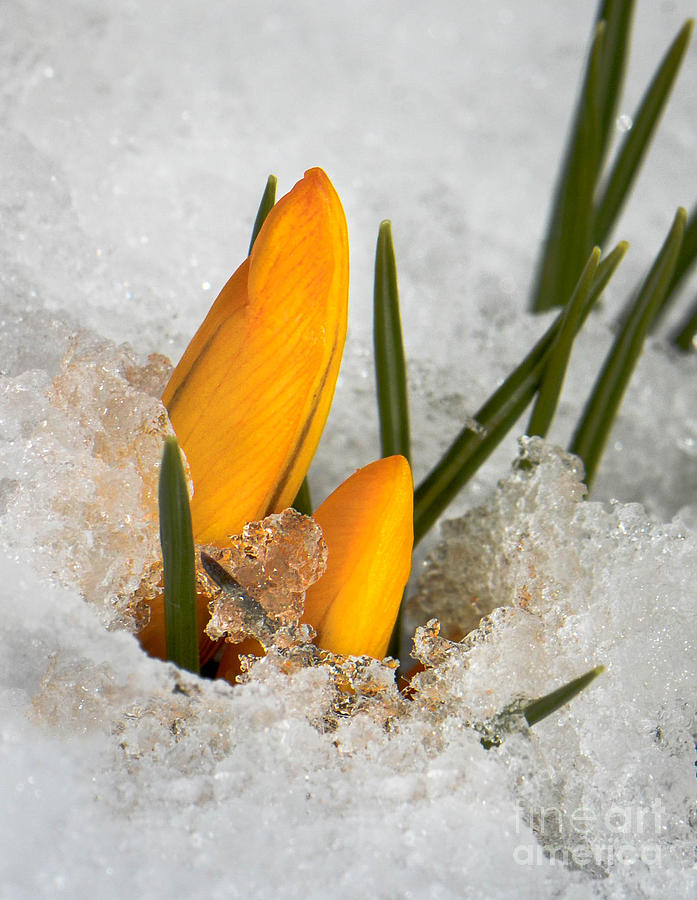Braving the Cold: A Guide to the Enchanting World of Winter Blooms

While the rest of the natural world seems to slumber under a blanket of snow and ice, a dedicated cohort of plants defies the odds, bursting forth with vibrant colors and delicate fragrances. These winter blooms are more than just a beautiful anomaly; they represent resilience, adaptation, and a reminder that even in the depths of darkness, life persists. This article delves into the fascinating world of winter-blooming plants, exploring their unique adaptations, highlighting some of the most captivating species, and offering practical advice for cultivating these jewels in your own garden.
The Science Behind the Spectacle: How Plants Bloom in Winter
The ability to flower in the winter months is a remarkable feat of adaptation. Unlike their spring and summer counterparts, winter-blooming plants have evolved strategies to withstand freezing temperatures, short days, and limited sunlight. Here are some of the key factors that contribute to their survival and success:
- Vernalization: This is a physiological process where plants require a period of prolonged cold exposure to trigger flowering. It’s like a biological alarm clock, ensuring that the plant only blooms after it has experienced a sufficient period of winter chill. This prevents premature flowering during brief warm spells that might be followed by damaging frosts.
- Antifreeze Proteins: Some winter bloomers produce special proteins that act as natural antifreeze, preventing ice crystals from forming inside their cells and damaging tissues. These proteins lower the freezing point of the plant’s sap, allowing them to survive sub-zero temperatures.
- Sunlight Optimization: Winter bloomers often have dark green leaves that efficiently absorb the limited sunlight available. The orientation of their flowers may also be optimized to capture the sun’s rays, maximizing photosynthesis.
- Protection from the Elements: Many winter bloomers have waxy or hairy coatings on their leaves and stems, which help to reduce water loss and protect them from wind and frost damage. Some even have drooping flowers that shield the reproductive organs from snow and ice.
- Pollination Strategies: With fewer pollinators active in winter, these plants have developed alternative pollination strategies. Some rely on wind pollination, while others attract the few available insects with strong fragrances or vibrant colors.

A Gallery of Winter Wonders: Exploring Captivating Species
The world of winter blooms is surprisingly diverse, offering a range of colors, shapes, and fragrances to brighten even the bleakest of days. Here are a few of the most enchanting species:
Hellebores (Helleborus): Often called "Winter Roses" or "Lenten Roses," hellebores are among the most popular and rewarding winter bloomers. They boast elegant, nodding flowers in a wide array of colors, from pristine white and creamy yellow to deep burgundy and speckled pink. They are also remarkably resilient and relatively low-maintenance, thriving in partial shade and well-drained soil.

Snowdrops (Galanthus nivalis): These delicate, nodding white flowers are often the first sign of spring, emerging from the snow in late winter. Their pure white petals and subtle fragrance make them a charming addition to any winter garden. They prefer moist, well-drained soil and partial shade.

Winter Aconite (Eranthis hyemalis): This cheerful little plant produces bright yellow, buttercup-like flowers that appear alongside snowdrops in late winter. They are a welcome splash of color and are known for their ability to naturalize and spread over time, creating a vibrant carpet of yellow.
Witch Hazel (Hamamelis): These shrubs or small trees produce spidery, fragrant flowers in shades of yellow, orange, and red. They are known for their unique bloom time, often flowering in the dead of winter, and their medicinal properties. Witch hazel extracts are commonly used in skincare products.
Camellias (Camellia japonica and Camellia sasanqua): While some camellias bloom in the spring, many varieties of Camellia sasanqua and some Camellia japonica bloom throughout the winter months. Their exquisite, rose-like flowers come in a wide range of colors, from pure white to deep red and everything in between. They prefer acidic soil and partial shade.
Winter Jasmine (Jasminum nudiflorum): This sprawling shrub produces bright yellow, star-shaped flowers on its bare branches in winter. It’s a versatile plant that can be trained to climb a wall or fence or left to cascade over a bank.
Cyclamen coum: This hardy cyclamen blooms in late winter and early spring, producing delicate, pink or white flowers with heart-shaped leaves. They are perfect for adding a touch of color to shady areas.
Mahonia: This evergreen shrub features bold, architectural foliage and clusters of fragrant, yellow flowers that attract pollinators in the winter. It’s a tough and adaptable plant that can tolerate a wide range of conditions.
Cultivating Winter Blooms: Tips for a Thriving Winter Garden
Growing winter-blooming plants can be a rewarding experience, bringing beauty and cheer to your garden during the coldest months of the year. Here are some practical tips for success:
- Choose the Right Plants: Research which winter bloomers are best suited to your climate and soil conditions. Consider factors such as hardiness, sunlight requirements, and soil drainage.
- Prepare the Soil: Most winter bloomers prefer well-drained soil that is rich in organic matter. Amend your soil with compost or other organic materials before planting.
- Plant at the Right Time: The best time to plant winter bloomers is typically in the fall, allowing them to establish their roots before the onset of winter.
- Provide Adequate Sunlight: While many winter bloomers prefer partial shade, they still need adequate sunlight to thrive. Choose a location that receives at least a few hours of direct sunlight each day.
- Water Regularly: Water your plants regularly, especially during dry periods. However, avoid overwatering, as this can lead to root rot.
- Mulch: Apply a layer of mulch around your plants to help retain moisture, suppress weeds, and protect the roots from frost.
- Protect from Wind and Frost: If you live in an area with harsh winters, consider providing extra protection for your plants, such as covering them with burlap or a cold frame.
- Deadhead Regularly: Remove spent flowers to encourage more blooms and prevent the plant from wasting energy on seed production.
- Fertilize Sparingly: Avoid over-fertilizing, as this can weaken the plant and make it more susceptible to disease. A light application of a balanced fertilizer in the spring is usually sufficient.
Beyond Aesthetics: The Ecological Importance of Winter Blooms
Winter blooms are not just beautiful; they also play a vital role in the ecosystem. They provide a crucial source of food and nectar for pollinators, such as bees and hoverflies, which are active on warmer winter days. These early blooms help to sustain these pollinators during a time when other food sources are scarce, contributing to their survival and the overall health of the ecosystem. Furthermore, they provide early season color, which can boost morale and mental well-being in humans during the long, dark winter months.
Frequently Asked Questions (FAQ)
Q: Are winter-blooming plants difficult to grow?
- A: Not necessarily. Many winter bloomers are relatively low-maintenance and can thrive with proper care and attention. Choosing the right plants for your climate and soil conditions is crucial for success.
Q: When is the best time to plant winter bloomers?
- A: The best time to plant winter bloomers is typically in the fall, allowing them to establish their roots before the onset of winter.
Q: Do winter bloomers need special care?
- A: While winter bloomers are generally hardy, they do benefit from some extra care, such as regular watering, mulching, and protection from wind and frost.
Q: How can I attract pollinators to my winter garden?
- A: Choose winter bloomers with strong fragrances or vibrant colors to attract pollinators. You can also provide a source of water, such as a birdbath, to encourage them to visit your garden.
Q: Can I grow winter bloomers in containers?
- A: Yes, many winter bloomers can be successfully grown in containers. Choose a pot that is large enough to accommodate the plant’s root system and use a well-draining potting mix.
Q: What do I do with my winter blooming plants after they finish flowering?
- A: Deadhead spent blooms to encourage new growth. Continue to water and fertilize as needed. Most winter bloomers will continue to grow and thrive throughout the spring and summer.
Conclusion: Embracing the Beauty of Winter
Winter blooms are a testament to the resilience and adaptability of nature. They offer a welcome splash of color and fragrance during the darkest months of the year, reminding us that even in the depths of winter, life persists. By understanding their unique adaptations and providing them with the right care, we can cultivate these enchanting plants in our own gardens and enjoy their beauty and ecological benefits for years to come. So, embrace the beauty of winter and discover the magic of winter blooms! They are a gift that keeps on giving, bringing joy and inspiration throughout the season.


